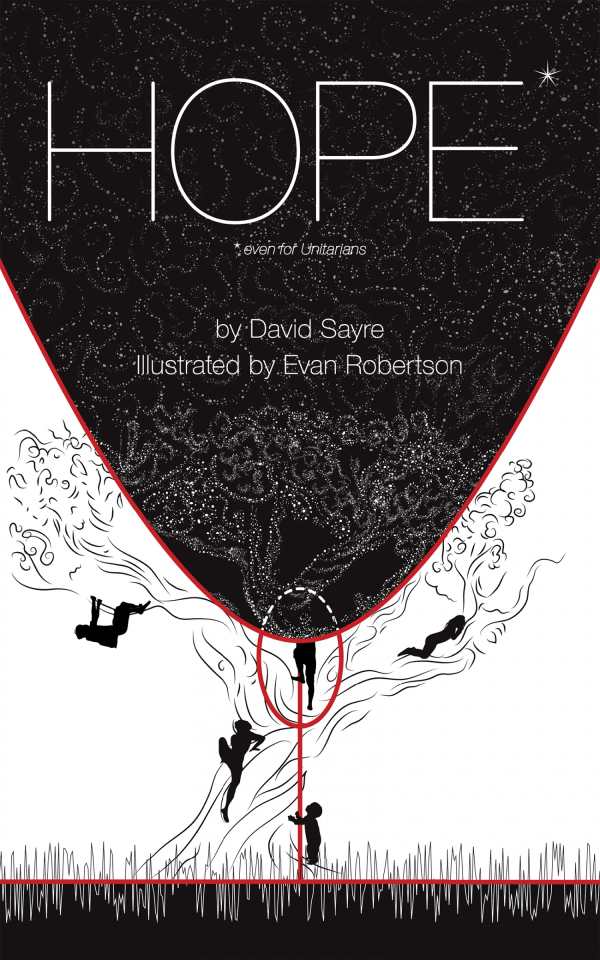Hope
Even for Unitarians
The philosophical text Hope is thought provoking as it aims to bridge the gap between faith and science.
David Sayre’s Hope is a brief but insightful volume about the relationship between spirituality, science, and personal renewal.
The book begins with an extended discussion of entropy, the law of nature that causes everything to wind down and to move to a state of equilibrium. Sayre calls entropy a fact of life, too: it can crush hope, as it leads to the intuition that everything is futile. The book refers to this realization as “The Bug,” and personifies it as a ravenous insect that chews away at all aspirations.
Sayre suggests that such despair be countered by the acceptance that there is much that people do not know, and indeed probably can’t ever know. Werner Heisenberg’s ideas about the uncertainty and unreliability of scientific observation are given much discussion; they become one of the book’s sources of hope, suggesting that if people can’t be sure that scientific views of the world are all-encompassing, then they aren’t locked into a related sense of futility.
But the book is both modest and ambitious in its aims. On the modest side: there are no arguments put forth to prove the existence of a god or intelligent design; Sayre explains “I’m not a theologian. My point is … simply to follow a trail of logic that is hopeful as well as rational.” Still, even that latter aim is ambitious. While the book does not push for theism, it does propose that the uncertainty of modern physics provides a loophole that allows people to hope for the best: the existence of a spiritual reality beyond the reach of entropy. In reaching for this assurance, though, the book is too brief; its arguments are too thin to support the weight of that possibility.
Still, the text includes useful suggestions for how cooperation and altruism can lead to better lives. Its section on “microgrids” focuses on how communities can benefit from working together, rather than engaging in the ruthless competition that a rational view of the world might recommend. This makes the slim volume read like more than a digression on quantum physics; it gives the topic some real-world applications.
Sayre’s tone is conversational, even when dealing with highly technical concepts; the text is accessible throughout because of this. Its footnotes are frequent, providing context and elaboration as needed. And Evan Robertson’s illustrations are whimsical and insightful, helping to illuminate the concepts of the book. Still, errors arise that undermine the work, as with discussion of Steven Spielberg looking for a title for E.T. in 1985 (the movie came out in 1982).
The philosophical text Hope is thought provoking as it aims to bridge the gap between faith and science.
Reviewed by
Matt Benzing
Disclosure: This article is not an endorsement, but a review. The publisher of this book provided free copies of the book and paid a small fee to have their book reviewed by a professional reviewer. Foreword Reviews and Clarion Reviews make no guarantee that the publisher will receive a positive review. Foreword Magazine, Inc. is disclosing this in accordance with the Federal Trade Commission’s 16 CFR, Part 255.

